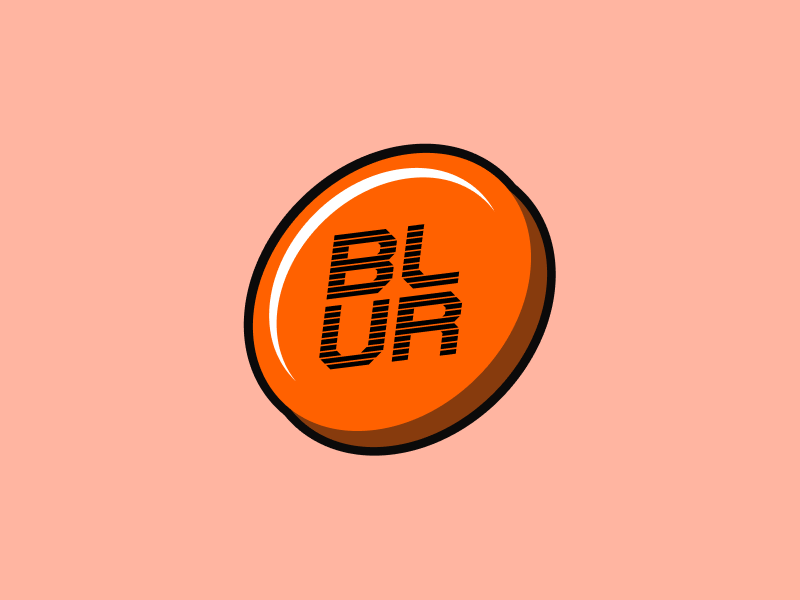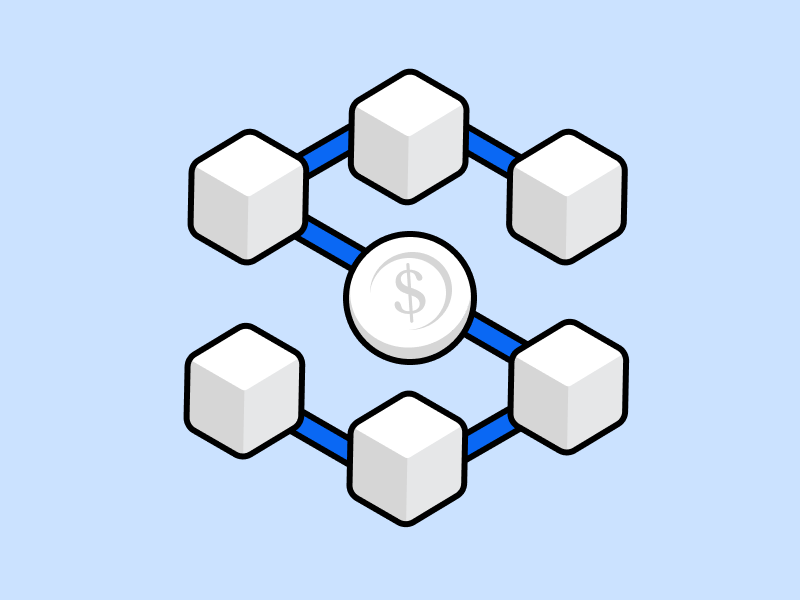What Is Taproot and What Are the Functions?
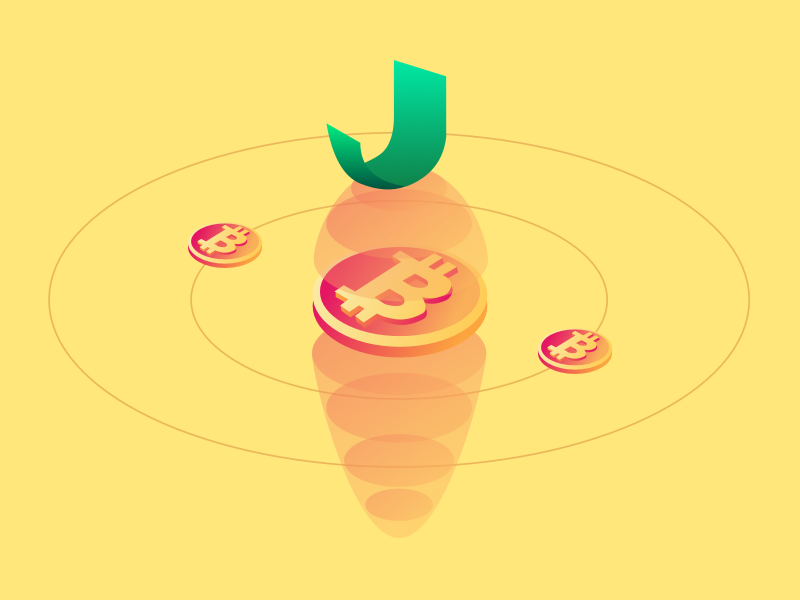
Bitcoin recently completed its most significant network upgrade in four years. The update, called Taproot, aims to streamline Bitcoin transaction processing and make it more efficient in terms of speed and cost. What is Taproot and how does it work? We will discuss this further in this article.
block-heading joli-heading" id="article-summary">Article Summary
- 🥕 Taproot is the latest Bitcoin update which was activated in block 709,632 on November 14, 2021.
- 📈 Taproot will optimize scalability, privacy, and smart contract functionality within the Bitcoin network.
- 💰 Taproot allows users to save on transaction fees.
What is Taproot?
Taproot is the latest Bitcoin update which was activated in block 709,632 on November 14, 2021. Bitcoin Taproot will optimize scalability, privacy, and smart contract functionality within the Bitcoin network.
This update generates a new address type, allowing bitcoins to look similar no matter whether they are sent for simple payments, multisig transactions, or using the Lightning Network. The new Taproot address allows users to save on transaction fees.
The taproot will reduce transaction size and make all transactions looks simple with only one signature. The taproot will also enable larger and more complex Bitcoin operations, which were previously not possible.
So what are the advantages of this latest update?
- Bitcoin transactions will become more efficient
- Transaction size will be reduced and simplified
- Enable complex smart contracts within the Bitcoin network
- Complex transactions will have low transaction costs like simple transactions
- Increase the privacy of Bitcoin transactions without compromising security
Why is it important to do Taproot?
Bitcoin is always evolving to make transactions more efficient without compromising bitcoin security. Among other things developed by the developer are wallet addresses, scripts, and new types.
Bitcoin has several types of addresses that can still be compatible with each other. Among other things, there are legacy addresses or often referred to as Pay to Public Key Hash (P2PKH), legacy wallet addresses usually start with the number 1…or 3…, and there is also a Segwit address which usually starts with bc1q….
For example, a legacy address is a popular bitcoin initial address, but a legacy address or P2PKH has several problems, including transactions using legacy addresses, which are not flexible and use large capacities, making transaction fees expensive. You can read What is Segwit in the previous article.
Previous Update, Segwit.
In 2017, Greg Maxwell and Pieter Wuille had an idea to reduce the bitcoin transaction capacity by separating the digital signature process to make transaction fees cheaper. Then came to the Segwit address and the bitcoin program went through a soft fork.
Segwit helps reduce errors, increases the number of transactions that can be processed, and reduces transaction costs by more than fifty percent. However, because there is still a scarcity of these old addresses, the sender of the transaction must pay attention to the recipient’s wallet’s policies — such as the contract or the script — which is both inconvenient and a severe privacy flaw. This is because the contract can be viewed by anybody, therefore the recipient’s privacy is compromised.
Privacy and efficiency are the drawbacks of old bitcoin addresses, so again in 2018 Greg Maxwell and Pieter Wuille proposed the latest update using Taproot.
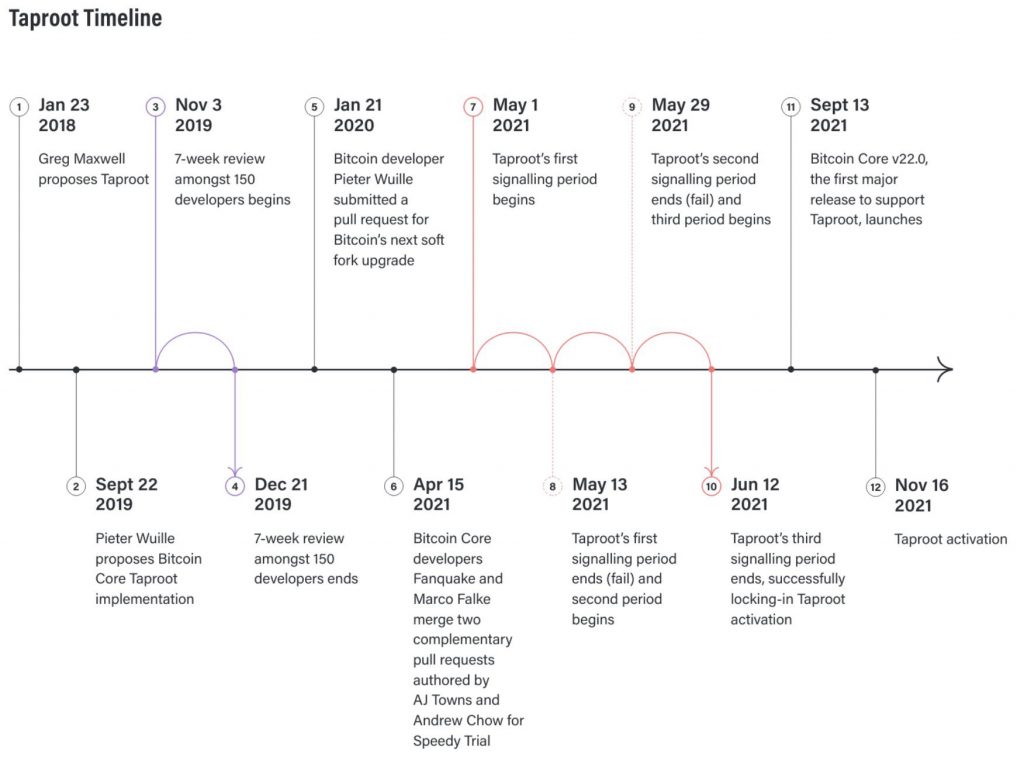
How to activate Taproot?
Since the bitcoin program is open source, applying for and executing this update is not easy. Without a central structure forcing them to agree to reforms, all parties around the world must concur. To conduct a “Speedy Trial” in this taproot update, all miner nodes must deliver a favorable signal before the code is executed.
Since May 2021, every miner has been obliged to vote on whether or not they approve of the taproot update, and it will only be implemented if at least 90% of miners indicate that they are ready to upgrade their program. This signal might be generated in 2160 blocks or during the period before the difficulty adjustment.
Finally on June 12, 2021, the miners reached a consensus and Taproot was locked to be activated. Speedy Trial – the green block indicates the miner wants to activate Taproot, and the red color does not yet want to activate it.
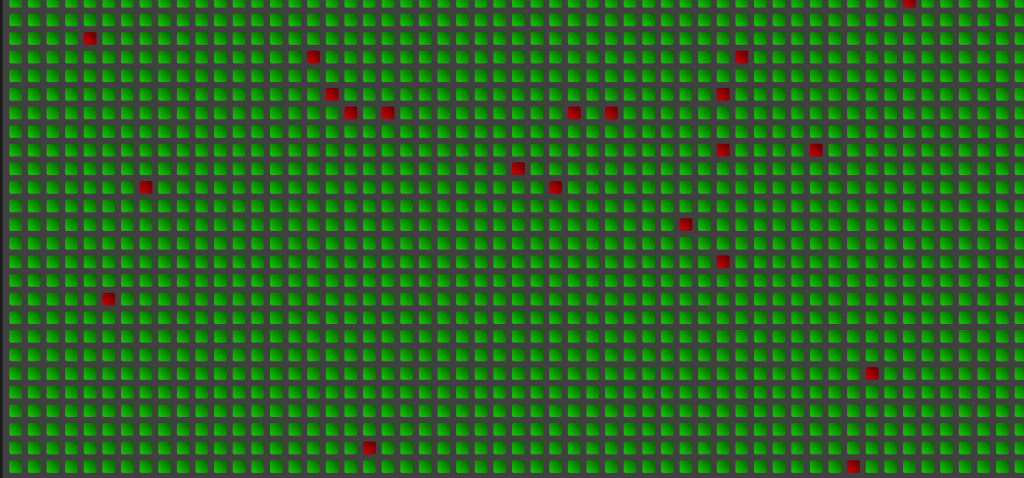
How does Taproot work?
The Bitcoin blockchain consists of computer code. So, when you send a transaction, your bitcoins will be linked to the script. This script command will tell the blockchain what you can do. Usually, you have to use the private key to provide a “signature†and prove that you can spend your bitcoins.
But people can perform more complex transactions (i.e., smart contracts, or code that defines an agreement between sender and receiver), such as requesting multiple signatures (multisignature) or requiring a waiting period known as a “timelock†before bitcoins can be spent.
Merkelized Abstract Syntax Trees (MAST)
The Taproot upgrade introduces Merkelized Abstract Syntax Trees (MAST), a structure that allows bitcoin to perform its functions and only discloses the specific conditions of the contract used. For example, if there is a multisignature address that is owned by many people and that address wants to spend a certain amount of bitcoins, they can set one spending condition where they all have to come to a consensus and agree to spend the funds or if they can’t reach a consensus, there will be other conditions.
If the conditions are agreed upon by all multisignature parties, Taproot allows the multisignature to be converted into a single digital signature. Therefore, the bitcoin network will not even know if this transaction uses a contract, this significantly increases the privacy of all owners of multisignature addresses.
Schnoor Signature
In addition, Taproot also uses the Schnorr Signature which allows superior privacy, lower costs, and more flexible multisig. Taproot also has Pay to Taproot (P2TR) where users can create UTXOs that can be unlocked and used by the owner of the private key.
This design allows users to choose between complex and arbitrary scripts and simple public-key functionality at the time of purchase, not at the time of receipt. This makes all Taproot output look similar. Since multisig output, single sig output, and other complex smart contracts all look the same on the blockchain, many chain analysis heuristics will become unusable, preserving privacy for all its users.
The combination of Schnoor Signature, MAST, P2TR and Tapscript makes bitcoin transactions more private, more efficient, more sophisticated and more cost-effective.
When can Taproot be used?
Like the previous update, to use Taproot needs adjustment and waiting for adoption time from bitcoin users around the world. Because bitcoin is decentralized, anyone can choose to run the old or newer version of the bitcoin program. You can see the progress of taproot adoption on Bitcoin Wiki.
Reference
- Bitcoin Magazine (2021, November 21)Why You Should Care About Taproot, The Next Major Bitcoin Upgrade. Bitcoin Magazine. Retrieved November 30, 2021 from https://bitcoinmagazine.com/technical/short-bitcoin-taproot-explainer
- Coindesk (2021, June 12) Locked In: Bitcoin’s Taproot Upgrade Gets Its 90% Mandate. Coindesk. Retreived November November 30, 2021 from https://www.coindesk.com/tech/2021/06/12/locked-in-bitcoins-taproot-upgrade-gets-its-90-mandate/
- Decrypt (2021, June 5) What Is Taproot, the Privacy-Focused Bitcoin Upgrade?. Jeff Benson. Retreived November 30, 2021 from https://decrypt.co/resources/what-is-taproot-proposed-bitcoin-upgrade
Share

